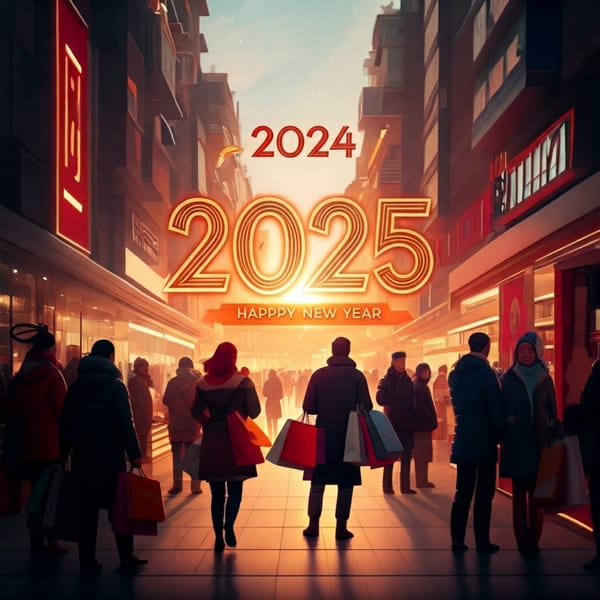E-commerce Boom: From Riding the Wave to Steering the Ship

Buckle up, entrepreneurs! The e-commerce scene is experiencing a tidal wave, with online sales reaching a record 16% of total US retail sales – a high not seen since the pandemic peak of 2020. This surge is fueled by a confluence of factors:
- Pain at the Pump: Skyrocketing gas prices incentivize consumers to shop online, avoiding frequent trips to the gas station.
- Convenience Reigns Supreme: Fast and reliable delivery options are becoming increasingly commonplace, making online shopping a more attractive proposition than ever before.
- Shifting Sands of Shopping: The pandemic may have permanently altered consumer behavior, leading to a lasting preference for the ease and safety of online shopping experiences.
But is this a temporary blip or a sign of a lasting shift in the retail landscape? The answer, like most things in business, is nuanced. While the boom presents a wealth of opportunities, it also comes with its own set of challenges.
Navigating the E-commerce Obstacle Course:
- The Competition Crucible: With more businesses vying for a slice of the online pie, standing out from the crowd is critical. Mastering the art of marketing and product differentiation becomes paramount to avoid getting lost in the digital sea.
- Cost Fluctuations - A Balancing Act: Rising gas prices can significantly impact fulfillment costs. Optimizing your supply chain and exploring alternative fulfillment options become essential tools in your arsenal.
- Evolving Customer Expectations - Raising the Bar: Gone are the days when slow delivery and clunky user experiences were tolerated. Today's online shoppers expect seamless navigation, intuitive interfaces, and lightning-fast delivery. Prepare to prioritize operational efficiency to meet these ever-increasing expectations.
Charting Your Course to Success in the E-commerce Boom:
Don't let these challenges deter you! Here are some key strategies to consider that will help you navigate this e-commerce wave and emerge a leader:
- Data-Driven Decisions: Leverage analytics to understand customer trends and optimize your product listings for better search visibility. The more visible you are, the more likely you are to convert browsers into buyers. Consider the following:
- What search terms are your target customers using? Optimize your product titles, descriptions, and meta tags to include these terms.
- What are your top-selling products? Analyze customer behavior to identify patterns and tailor your marketing efforts accordingly.
- Where are your website visitors dropping off in the buying journey? Identify any friction points in your checkout process and streamline it for a smoother customer experience.
- Targeted Marketing - Hitting the Bullseye: Don't waste marketing dollars on a scattershot approach. Tailor your campaigns to reach the right audience, on the platforms they frequent. Social media goes beyond just Amazon! Consider platforms like TikTok or Instagram depending on your target demographic.
- Develop buyer personas: Create detailed profiles of your ideal customers, including their demographics, interests, and online behavior.
- Utilize social media advertising platforms: Utilize the advanced targeting options offered by platforms like Facebook and Instagram to reach your ideal customers with laser precision.
- Fulfillment Innovation - Thinking Outside the Box: Explore alternative fulfillment options to mitigate potential cost increases and ensure speedy delivery. This could involve partnering with fulfillment centers closer to your customer base, utilizing local shipping solutions, or even exploring dropshipping options for specific products.
- Evaluate your current fulfillment setup: Analyze the efficiency of your existing fulfillment process and identify areas for improvement.
- Research alternative fulfillment options: Explore the pros and cons of different fulfillment models, such as in-house fulfillment, fulfillment by Amazon (FBA), or third-party logistics (3PL) providers.
- Consider regional fulfillment centers: Partnering with fulfillment centers located closer to your customer base can significantly reduce shipping times and potentially offset rising gas prices.
- Customer Centricity - Building Loyalty: Invest in excellent customer service and post-purchase communication. Regardless of the platform, building customer loyalty requires exceeding expectations. This could involve offering robust return policies, personalized recommendations, or loyalty programs.
- Prioritize customer service: Train your customer service team to be responsive, helpful, and professional.
- Implement a post-purchase communication strategy: Send follow-up emails to thank customers for their purchase, offer product recommendations, and solicit feedback.
Let's Consider Some Examples:
Standing Out in a Crowded Marketplace: Imagine a small business selling handmade candles. In a crowded online marketplace filled with mass-produced options, this business could leverage data and creativity to differentiate itself. By analyzing search trends, they could identify popular scent profiles and create unique candle names with engaging descriptions. Additionally, they could utilize high-quality product photography and showcase the craftsmanship behind their candles through social media videos. This targeted approach, combined with excellent customer service (perhaps offering personalized gift wrapping or handwritten thank you notes), could help this small business carve out a niche in the competitive online candle market.
The e-commerce landscape is a dynamic and ever-evolving beast. By being proactive, adaptable, and data-driven, you can ensure your business not only survives but thrives in this exciting new era of online shopping.




